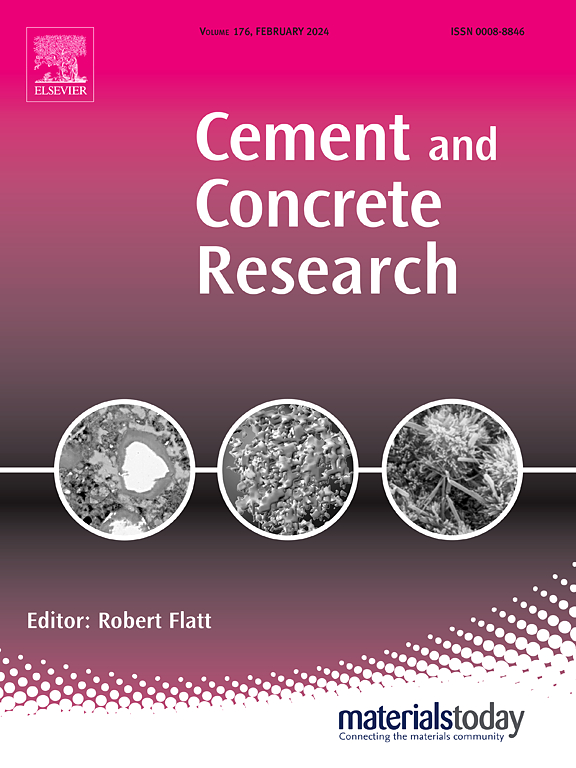Zn2+作为掺杂剂稳定水合碳酸镁
IF 13.1
1区 工程技术
Q1 CONSTRUCTION & BUILDING TECHNOLOGY
引用次数: 0
摘要
研究了含Zn2+的碳酸镁固溶体的形成。锌的存在在初期阻碍水镁石的反应,但在长期内促进其反应。在没有Zn和存在Zn的情况下,最初形成的褐石矿[MgCO3·3H2O]和水镁石随着时间的推移转化为斑铅矿[Mg5(CO3)4(OH)2·5H2O],而斑铅矿在整个研究期间(1年)保持稳定。锌与铅锌矿形成固溶体,最大Zn/(Mg + Zn)摩尔比为0.01。发现固溶体在热力学上比纯斑铅石更稳定。当Zn浓度超过0.01 Zn/(Mg + Zn)摩尔比时,过量的锌在反应初期析出为x射线非晶相,Zn/Mg原子比可能为2。本文报道的研究结果证实了在hmc中形成固溶体的可能性,从而提高了某些hmc作为建筑材料的稳定性。本文章由计算机程序翻译,如有差异,请以英文原文为准。
Zn2+ as a dopant to stabilize hydrated magnesium carbonates
The formation of solid solutions of Mg‑carbonates incorporating Zn2+ was investigated. The presence of Zn retarded the reaction of brucite at the early stages but increased its reaction in the long-term. The initially formed nesquehonite [MgCO3·3H2O] and brucite converted to dypingite [Mg5(CO3)4(OH)2·5H2O] with time, both in the absence and presence of Zn, while dypingite remained stable throughout the duration of the study (1 year). Zinc forms a solid solution with dypingite with a maximum Zn/(Mg + Zn) molar ratio of 0.01. The solid solution was found to be thermodynamically more stable than pure dypingite. With further increase of Zn beyond 0.01 Zn/(Mg + Zn) molar ratios, the excess zinc precipitates as X-ray amorphous phases with a possible Zn/Mg atomic ratio of 2 at early reaction time. The findings reported here confirm the possibility of solid solution formation in HMCs enabling the improved stability of certain HMCs for safe utilization as construction materials.
求助全文
通过发布文献求助,成功后即可免费获取论文全文。
去求助
来源期刊

Cement and Concrete Research
工程技术-材料科学:综合
CiteScore
20.90
自引率
12.30%
发文量
318
审稿时长
53 days
期刊介绍:
Cement and Concrete Research is dedicated to publishing top-notch research on the materials science and engineering of cement, cement composites, mortars, concrete, and related materials incorporating cement or other mineral binders. The journal prioritizes reporting significant findings in research on the properties and performance of cementitious materials. It also covers novel experimental techniques, the latest analytical and modeling methods, examination and diagnosis of actual cement and concrete structures, and the exploration of potential improvements in materials.
 求助内容:
求助内容: 应助结果提醒方式:
应助结果提醒方式:


